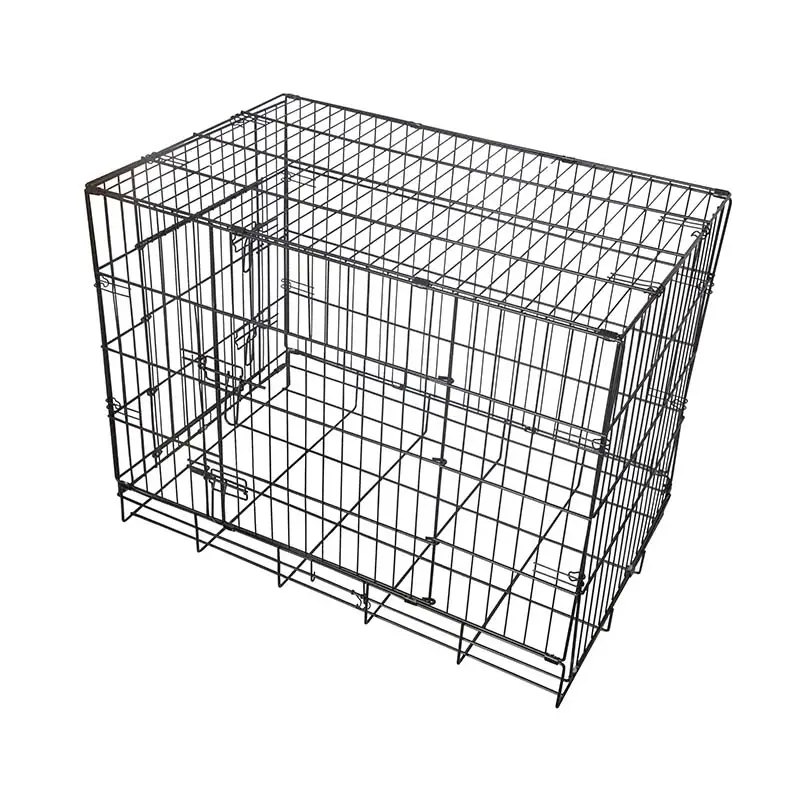Creating the perfect living environment for pet mice requires careful consideration of materials that balance durability with hygiene. Mouse cages must withstand daily wear while maintaining a clean, safe space for these active pets. Understanding the properties of different materials helps pet owners make informed decisions about their mouse housing solutions.
High-quality wire mesh stands as a cornerstone material in mouse cage construction. Galvanized steel or powder-coated wire offers exceptional durability while providing essential ventilation. When selecting mouse cages with wire components, look for spacing between 0.25 to 0.5 inches to prevent escape while ensuring proper airflow. Premium wire materials resist corrosion from regular cleaning and maintain structural integrity over time.
The metal framework in modern mouse cages often incorporates aluminum or stainless steel elements. These materials prove invaluable for their lightweight nature and resistance to rust. Quality metal components ensure the cage maintains its shape and stability, even with energetic mouse activity and frequent handling during cleaning routines.
Contemporary mouse cages frequently utilize high-grade plastics and acrylics for base trays and enclosed areas. These materials offer numerous advantages, including ease of cleaning, lightweight handling, and excellent visibility for monitoring pet activity. Food-grade plastics ensure no harmful chemicals leach into the environment, while their smooth surfaces prevent bacteria accumulation.
Polycarbonate and other premium plastics resist gnawing and scratching, maintaining their appearance and structural integrity over extended periods. The transparency of acrylic components allows owners to observe their pets while providing the mice with a sense of security in their environment.

Modern mouse cages incorporate sophisticated ventilation designs using strategically placed mesh panels and air circulation features. These systems maintain optimal humidity levels while preventing ammonia buildup from waste. Well-designed ventilation prevents respiratory issues and creates a healthier environment for both mice and their owners.
Many contemporary mouse cages feature removable ventilation panels that simplify cleaning while ensuring consistent airflow. This design element proves particularly valuable in multi-level habitats where air quality management becomes more challenging.
Today's mouse cages often feature modular designs with interchangeable components made from various materials. This versatility allows owners to customize their pets' living space while maintaining hygiene standards. Removable platforms, tubes, and exercise areas constructed from durable plastics or metals extend the cage's functionality without compromising cleanliness.
These modular elements typically incorporate quick-release mechanisms and washable surfaces, streamlining maintenance routines while providing enrichment opportunities for the mice. The ability to reconfigure and expand the living space helps prevent boredom and promotes healthy activity levels.
The best mouse cages feature materials specifically chosen for their cleaning properties. Non-porous surfaces prevent bacterial growth and simplify daily maintenance. Modern materials resist staining and odor absorption, maintaining a fresh environment with proper care. Regular sanitization becomes more effective when working with quality materials that don't degrade with frequent cleaning.
Professional-grade mouse cages often incorporate antimicrobial properties in their materials, reducing the risk of bacterial colonization between cleanings. This feature proves particularly valuable in maintaining long-term hygiene standards and protecting pet health.
High-quality mouse cages demonstrate exceptional longevity when constructed from appropriate materials. Premium plastics retain their structural integrity and appearance even after years of use, while properly treated metals resist corrosion and wear. Understanding the expected lifespan of different materials helps owners plan for maintenance and eventual replacement needs.
Regular inspection of cage materials ensures early detection of wear patterns or potential safety concerns. Quality mouse cages often come with warranties covering material defects, reflecting manufacturers' confidence in their durability standards.
Contemporary mouse cage manufacturers increasingly incorporate sustainable materials into their designs. Recycled plastics and responsibly sourced metals reduce environmental impact while maintaining necessary durability standards. These eco-conscious options often feature improved thermal properties, benefiting both the environment and pet comfort.
Biodegradable components for disposable elements and recyclable packaging demonstrate the industry's commitment to environmental responsibility. These initiatives allow pet owners to make environmentally conscious choices without compromising on quality or safety.
Quality mouse cages meet or exceed established safety standards for pet housing. Materials undergo rigorous testing for toxic compounds and structural integrity. Certification processes ensure consistent quality across production batches, providing peace of mind for conscientious pet owners.
Industry standards continue evolving to address emerging safety concerns and improve animal welfare. Regular updates to material specifications reflect advancing understanding of pet care requirements and environmental considerations.
Regular weekly inspections help identify potential issues early. Check for signs of chewing damage, rust development, or structural weaknesses. Pay special attention to connection points and high-traffic areas where wear typically occurs first. Monthly detailed examinations of all components ensure long-term safety and functionality.
Avoid untreated wood, which absorbs moisture and harbors bacteria. Steer clear of soft plastics that mice can easily chew through, and avoid materials containing zinc or lead. Additionally, avoid any components with sharp edges or small gaps that could trap or injure pets.
Metal components conduct temperature more readily than plastics, requiring careful placement away from direct sunlight or drafts. Quality plastic and acrylic materials provide better insulation, helping maintain stable temperatures. Consider combining materials strategically to create optimal microenvironments within the cage.
 Hot News
Hot News
Copyright © 2024 Top Trust Biotechnology Co., Ltd All Rights Reserved Privacy policy